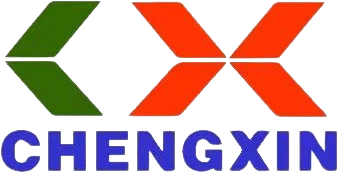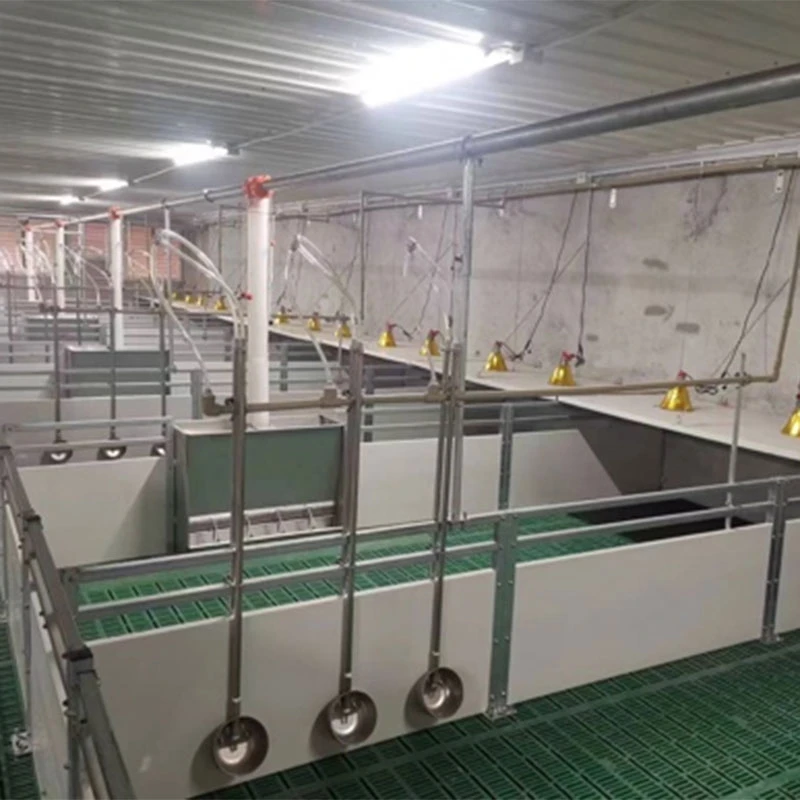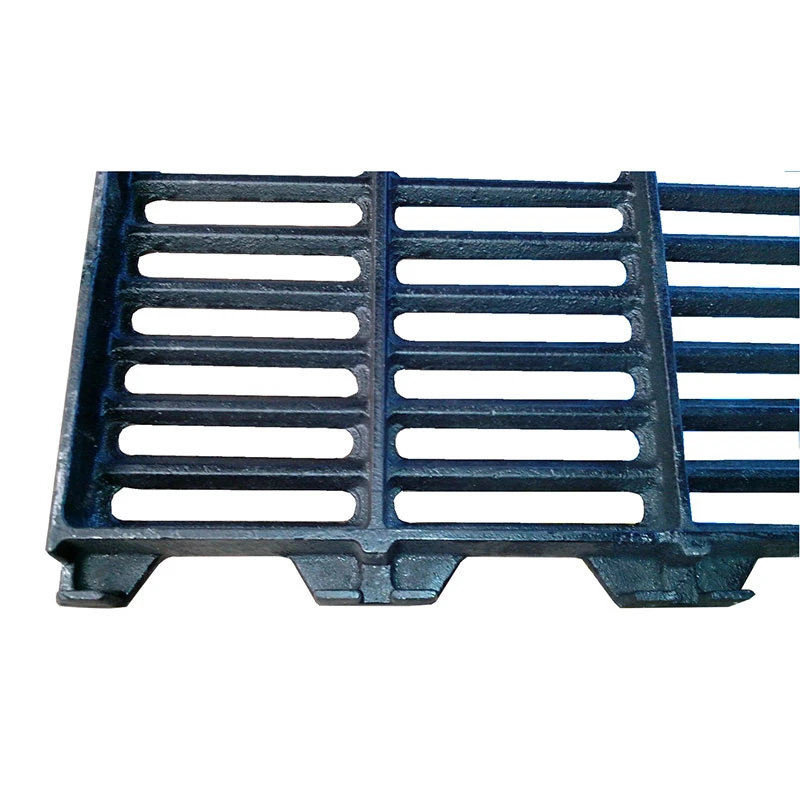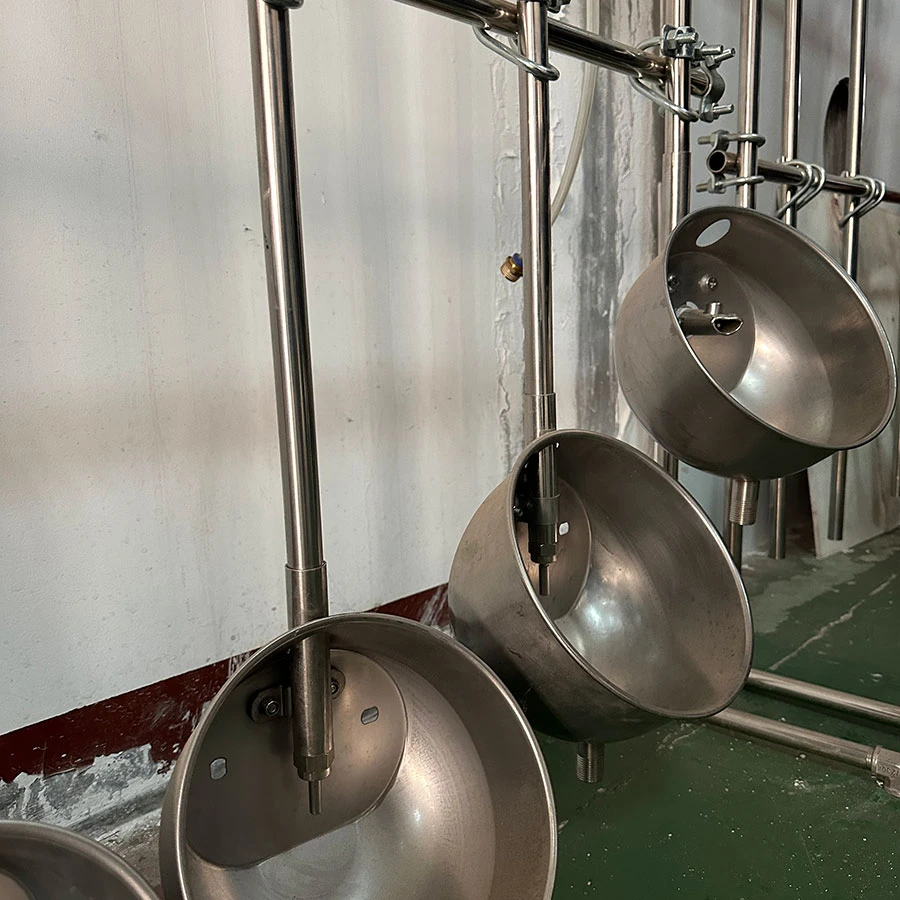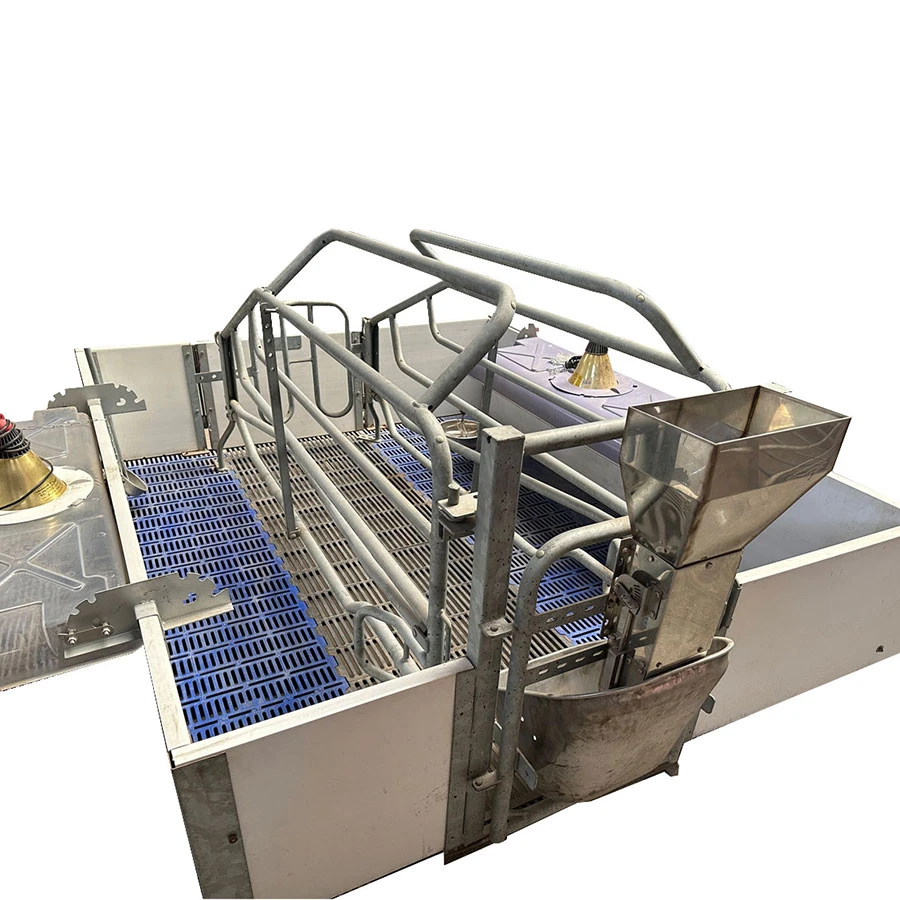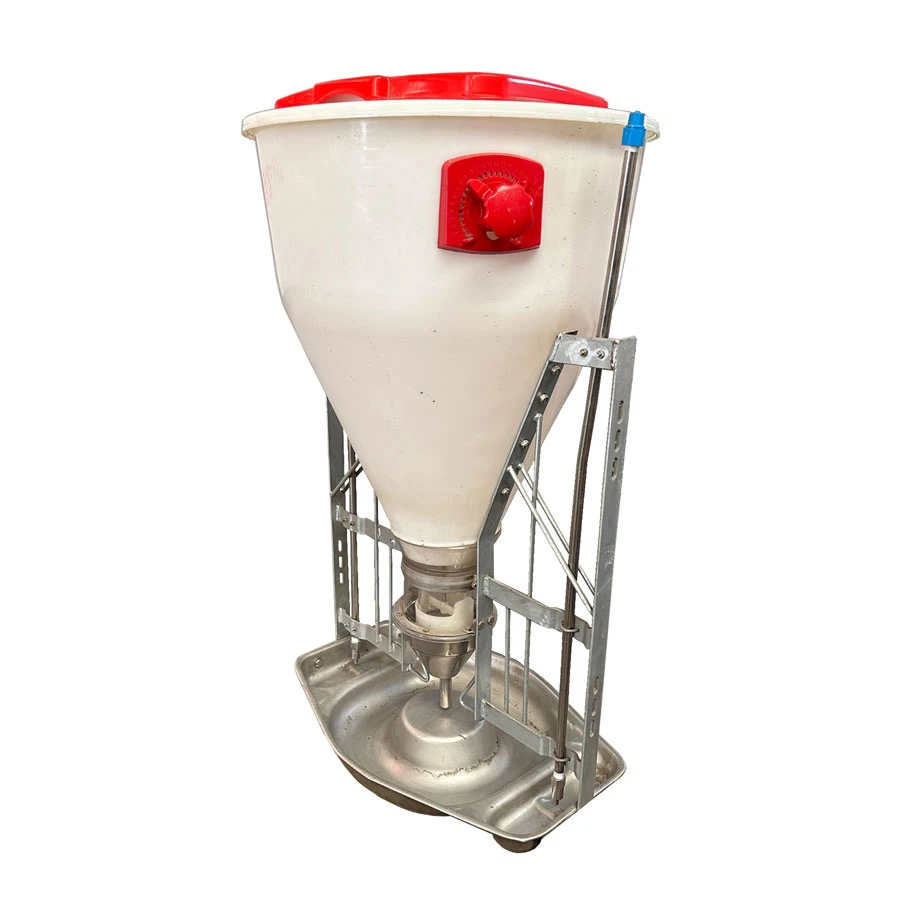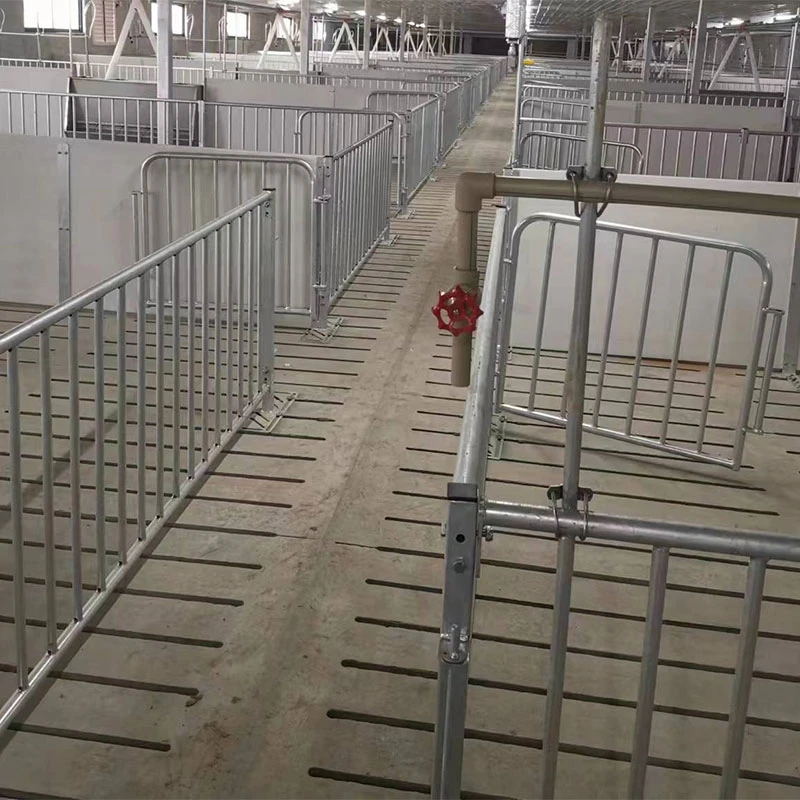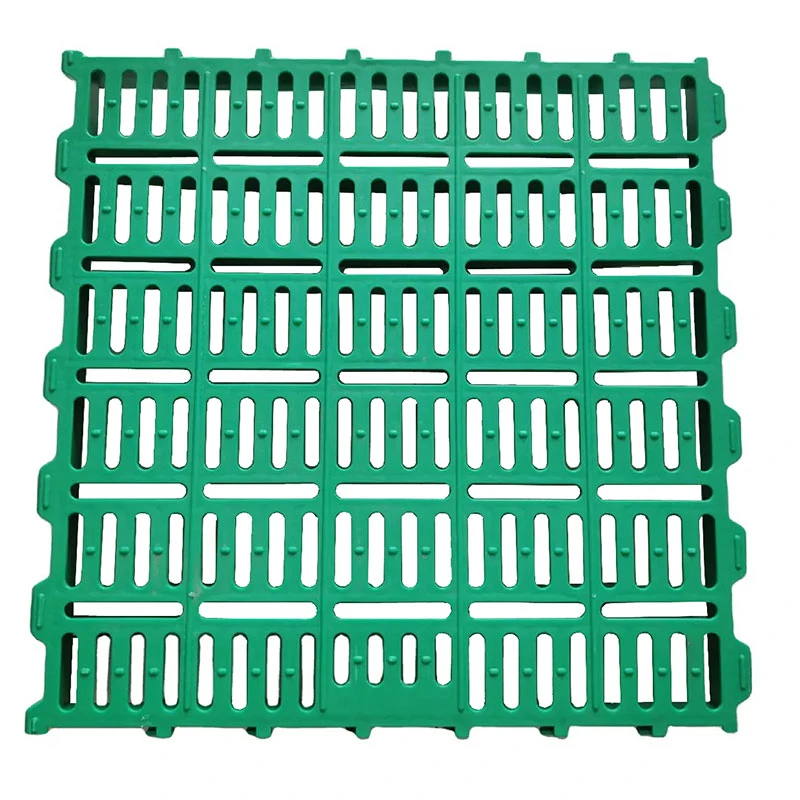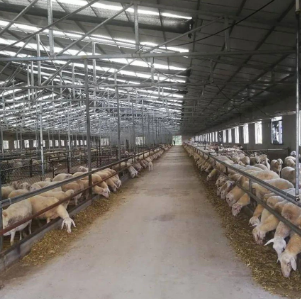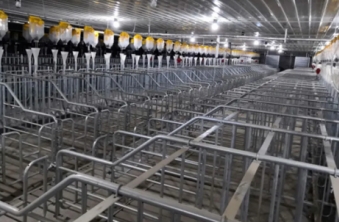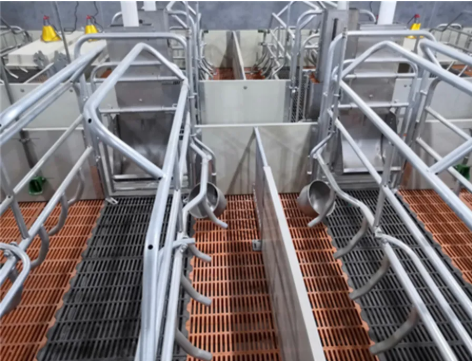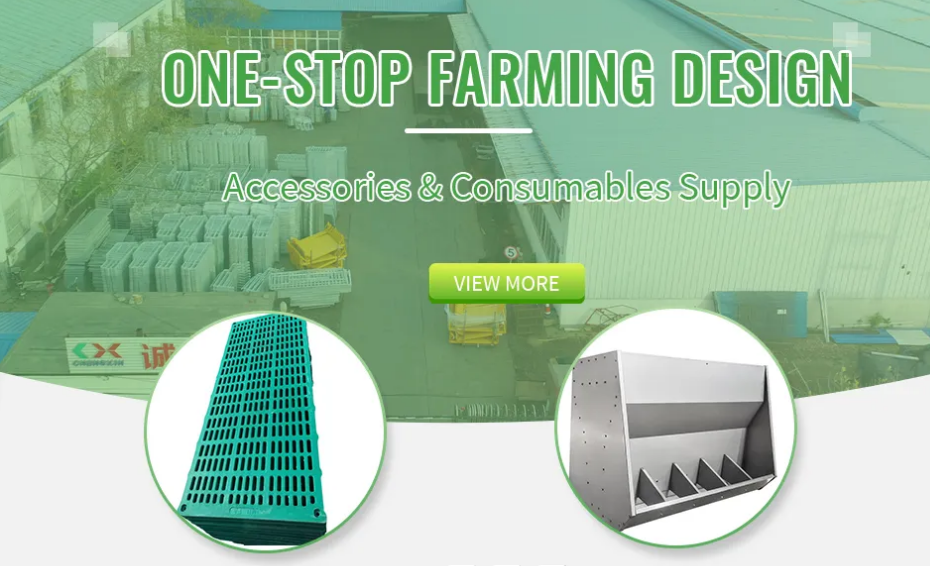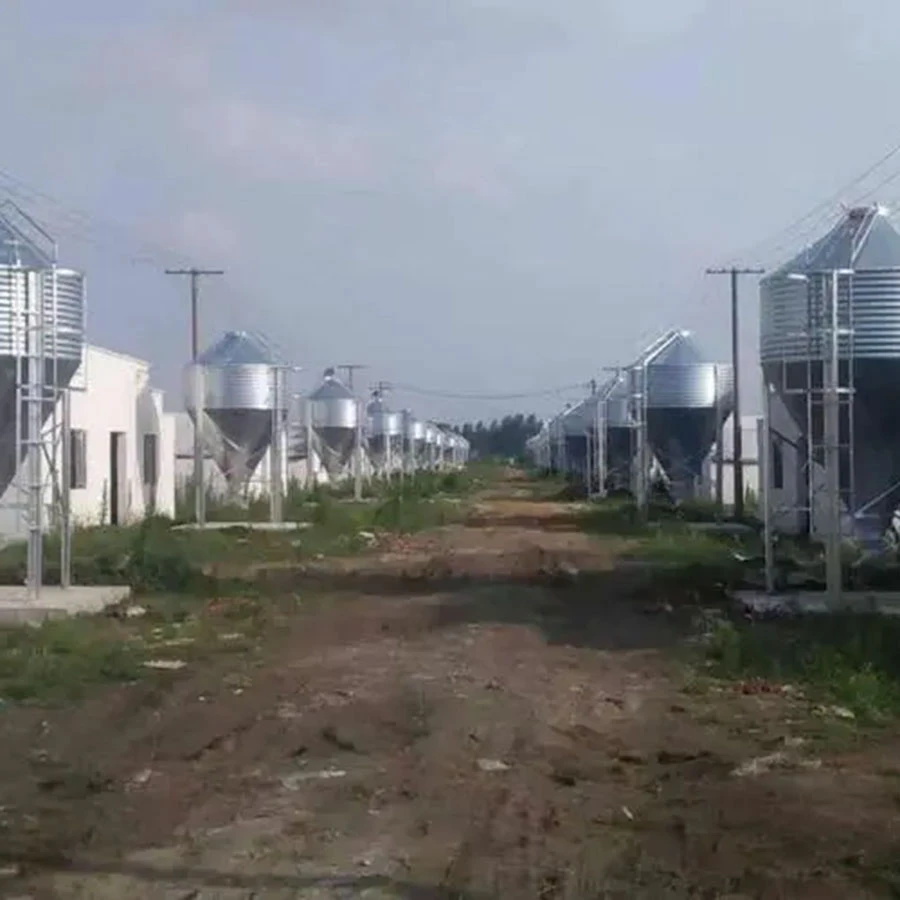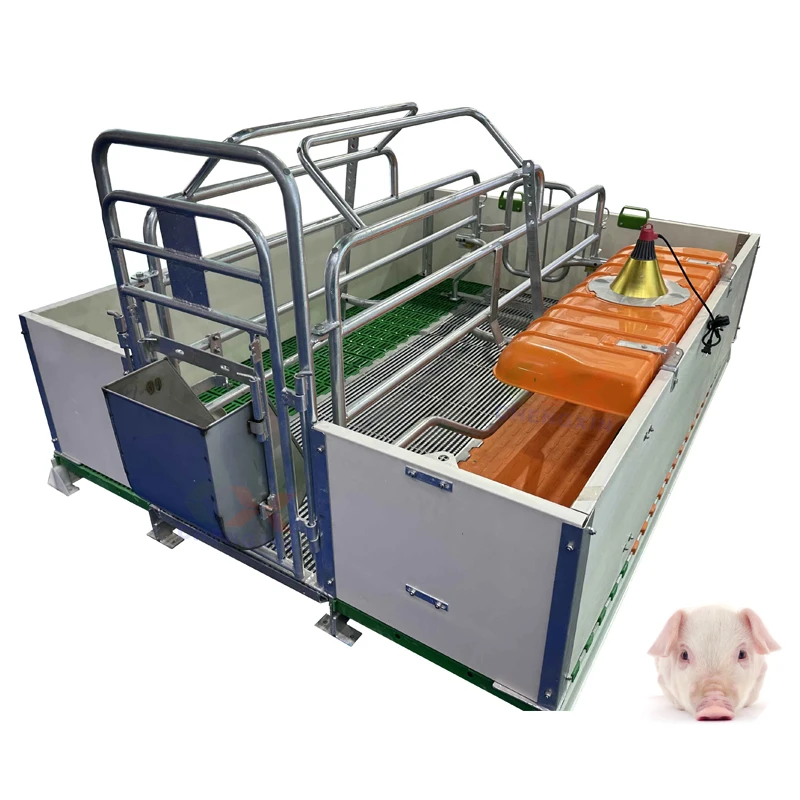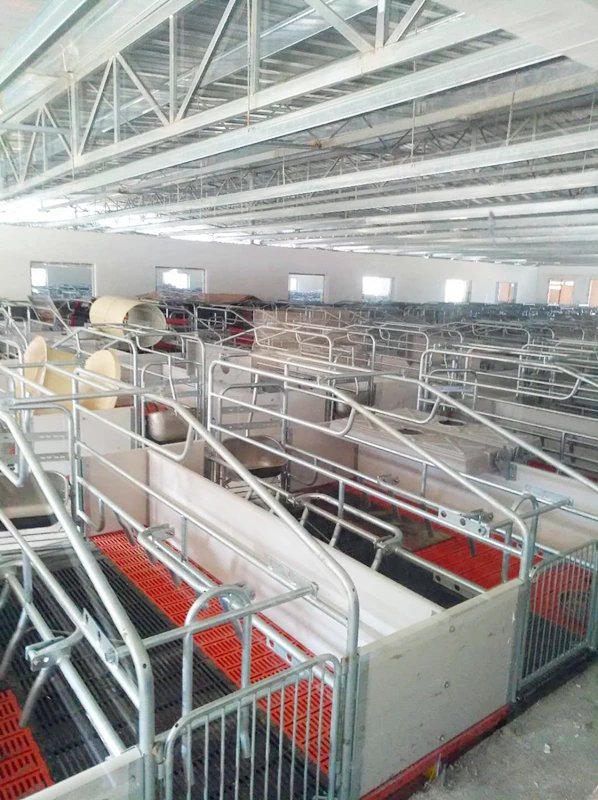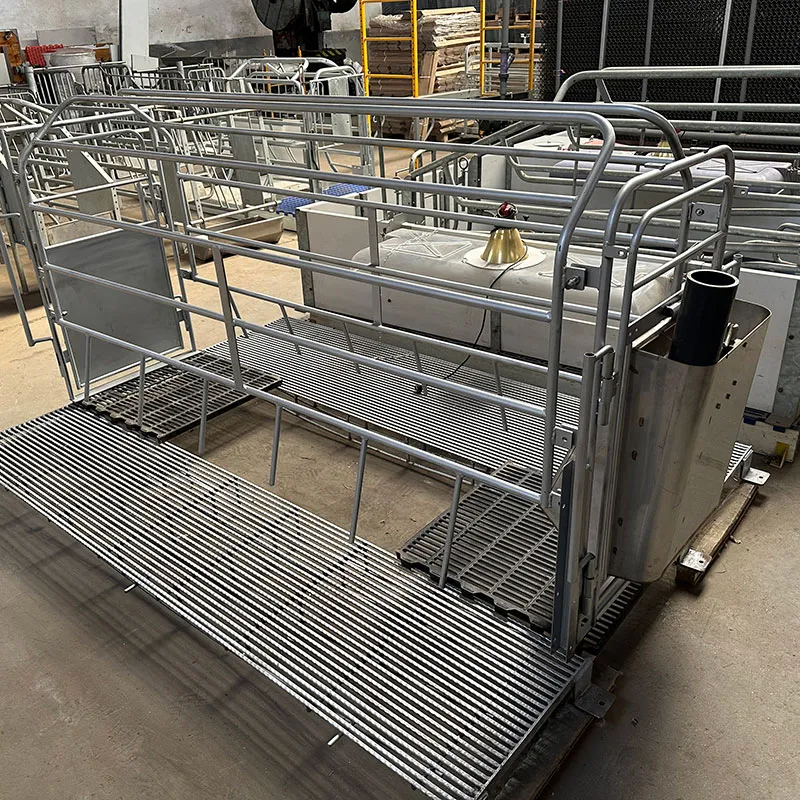Optimizing Swine Production: The Role of Advanced Wet Dry Feeders
In modern swine farming, efficiency and animal welfare are paramount. The evolution of feeding technology has been a critical driver in achieving these goals, moving from traditional dry feeding methods to innovative solutions. Among these, wet dry feeders for pigs stand out as a revolutionary advancement. These systems are designed to provide pigs with immediate access to both feed and water, mimicking natural feeding behaviors and significantly enhancing nutrient intake and growth rates. This integration minimizes feed waste, optimizes water consumption, and promotes a healthier environment, contributing directly to improved farm profitability and sustainability in the agricultural sector.
The industry trend is clearly shifting towards automated, welfare-friendly feeding systems. Farmers are increasingly adopting technologies that offer precise control over feed delivery, reduce labor costs, and improve the overall health and productivity of their herds. The demand for solutions that can adapt to different pig growth stages, from farrowing to finishing, is growing, making specialized wet dry feeders for pigs an indispensable part of modern pig farming equipment. This shift is also driven by consumer demand for responsibly raised pork, pushing producers to invest in equipment that aligns with higher animal welfare standards.
Beyond just feed delivery, these advanced feeders play a crucial role in overall farm management, providing data that can inform feeding strategies and identify potential health issues early on. This data-driven approach is key to achieving optimal feed conversion ratios (FCRs) and ensuring sustainable growth for the farm. The integration of such sophisticated equipment, including specialized farrowing equipment designed for sow and piglet comfort, underscores a holistic approach to livestock management.
The Advanced Manufacturing Process of Pig Dry And Wet Feeders
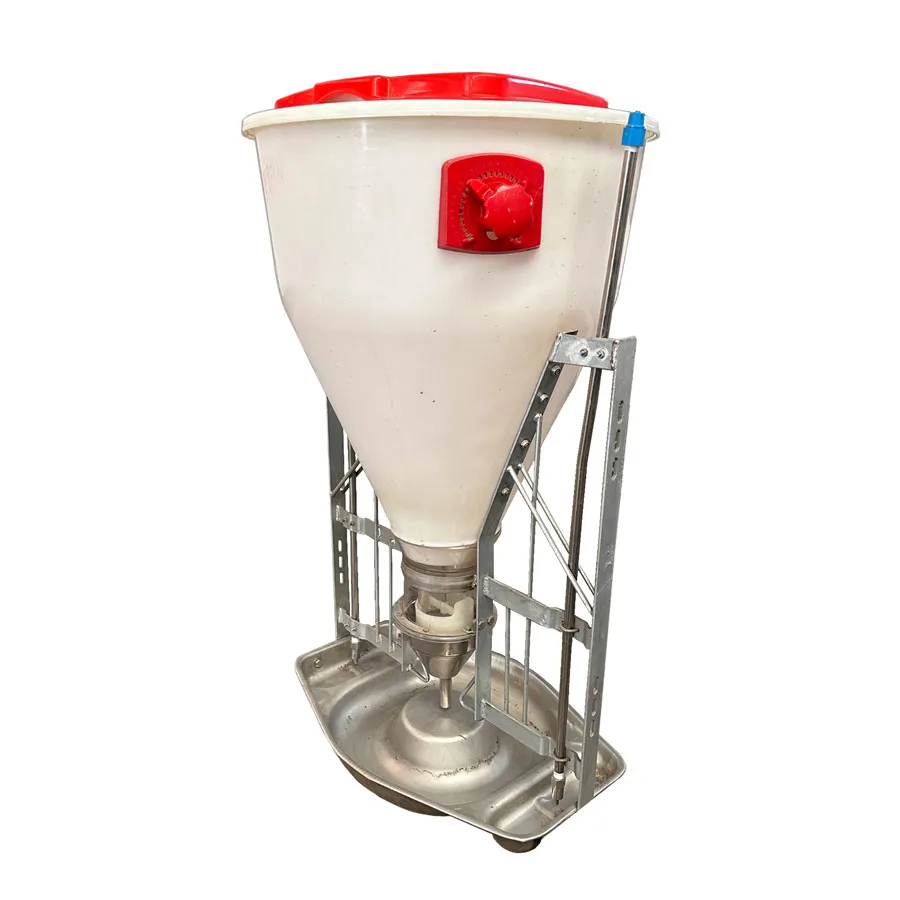
The production of high-quality wet dry feeders for pigs, such as the Pig Dry And Wet Feeder In Pig Farming Equipment, involves a meticulous manufacturing process designed to ensure durability, hygiene, and optimal performance. This process begins with the careful selection of raw materials. Typically, feeders are constructed from high-grade stainless steel (e.g., SUS304) for critical components like the feed trough and water dispenser, known for its exceptional corrosion resistance and ease of cleaning, which is vital in preventing bacterial growth. Other parts may utilize robust, food-grade engineering plastics or galvanized steel for structural integrity.
The manufacturing journey often includes precision cutting and stamping of metal sheets, followed by advanced welding techniques like TIG (Tungsten Inert Gas) welding to create strong, seamless joints that resist wear and tear. For plastic components, injection molding ensures dimensional accuracy and a smooth finish. CNC (Computer Numerical Control) machining is extensively employed for critical parts like dispensing mechanisms, guaranteeing precise tolerances and consistent feed flow. Every component undergoes rigorous surface treatment, such as polishing for stainless steel, to eliminate sharp edges and facilitate cleaning, crucial for maintaining optimal animal health.
Quality control is integrated at every stage. Products are subjected to stringent inspections to meet international standards such as ISO 9001 for quality management systems. This includes checks for material composition, weld integrity, dimensional accuracy, and functionality of the feed and water dispensing mechanisms. Performance testing simulates real-world usage to ensure longevity and efficiency. A well-constructed wet dry feeder can have a service life exceeding 10-15 years, even under demanding farm conditions. These feeders are specifically designed for the animal husbandry sector, including specialized applications within intensive swine production facilities. Their robust design offers significant advantages, such as enhanced feed hygiene preventing disease spread, and remarkable feed efficiency leading to energy savings by reducing waste and optimizing pig growth rates.
Key Technical Parameters and Advantages
Understanding the technical specifications of wet dry feeders for pigs is crucial for making informed purchasing decisions. These parameters directly impact efficiency, durability, and return on investment. Below is a table outlining typical specifications for high-performance feeders.
| Feature | Parameter/Description |
|---|---|
| Material | SUS304 Stainless Steel (trough), High-Density Polyethylene (hopper), Galvanized Steel (frame) |
| Feeding Capacity | 50-100 kg (depending on model) |
| Number of Feeding Holes | 2-8 (suitable for 40-100 pigs per feeder) |
| Water Supply | Integrated nipple drinker with adjustable flow |
| Feed Adjustment | Manual or automatic (sensor-based) multi-level feed flow control |
| Dimensions (L x W x H) | Varies by model (e.g., 80cm x 50cm x 100cm) |
| Applicable Pigs | Weaners to Finishers (15 kg - 120 kg) |
| Hygiene Features | Smooth surfaces, rounded edges, easy-to-clean design, reduced feed spillage |
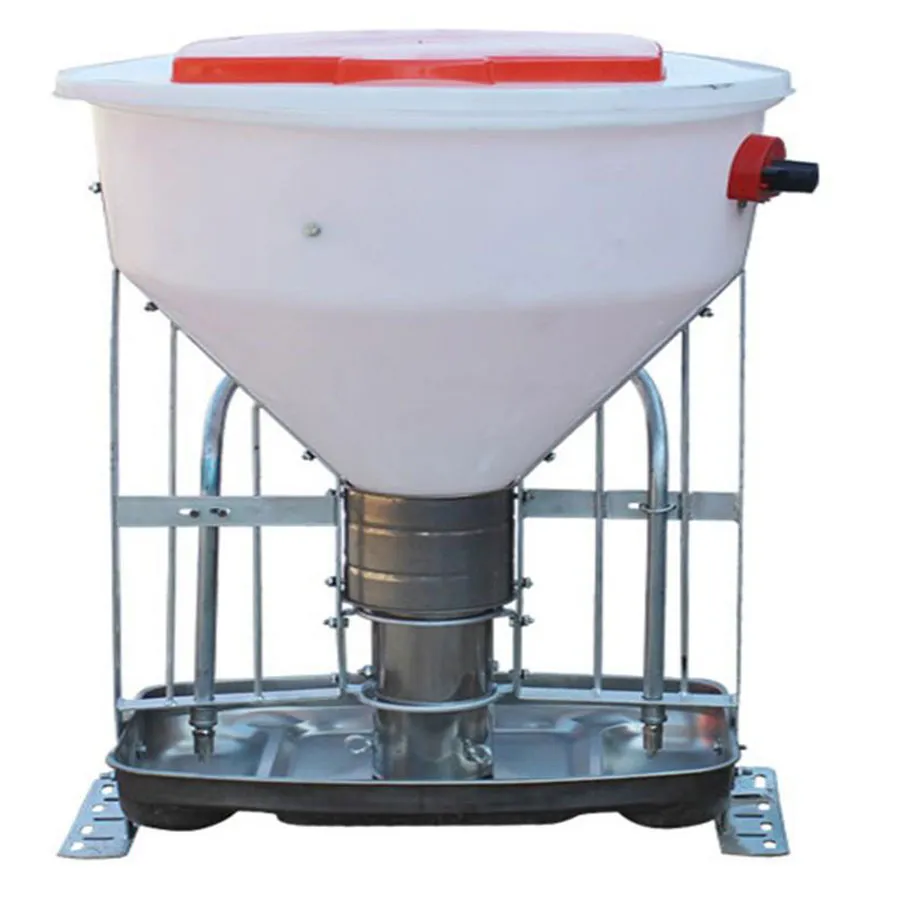
The technical advantages of modern wet dry feeders for pigs are numerous. By allowing pigs to mix feed with water at the point of consumption, these feeders promote higher feed intake and better digestibility, directly impacting the Feed Conversion Ratio (FCR). A lower FCR means less feed is required to achieve a kilogram of weight gain, translating into significant cost savings. Furthermore, the design inherently reduces feed waste compared to traditional dry feeders, as the wet consistency makes it easier for pigs to consume all dispensed feed without spillage.
Beyond efficiency, these feeders contribute to enhanced animal welfare. The provision of readily available water alongside feed reduces stress and promotes natural drinking behaviors. The improved hydration can lead to healthier pigs, reducing instances of digestive issues and improving overall immunity. The robust stainless steel construction ensures anti-corrosion properties and longevity, even in the humid and chemically rich environment of a pig barn. This robust build also minimizes maintenance requirements, ensuring continuous operation and reliability for pig farmers focusing on productivity and sustainability.
Application Scenarios and Industry Impact
Wet dry feeders for pigs are versatile and find widespread application across various stages of swine production, significantly impacting farm efficiency and animal health. From farrowing to finishing units, their adaptable design ensures optimal feeding for different age groups and sizes of pigs. In farrowing units, where the sow and piglets require specific nutritional needs, the integration with advanced farrowing equipment allows for precise feed delivery, supporting both sow recovery and rapid piglet growth.
For nursery and grower pigs, the ability to control feed and water intake individually promotes healthier growth transitions, reducing post-weaning stress. In finishing pens, the feeders' capacity to handle large volumes and encourage high consumption rates helps pigs reach market weight more quickly and efficiently. Case studies from leading swine operations consistently demonstrate that farms utilizing these systems report a 5-10% improvement in daily gain and a 3-7% reduction in feed consumption per kilogram of gain, showcasing tangible economic benefits. For instance, a medium-sized farm with 1,000 finishing pigs could save thousands of dollars annually on feed costs due to improved FCR.
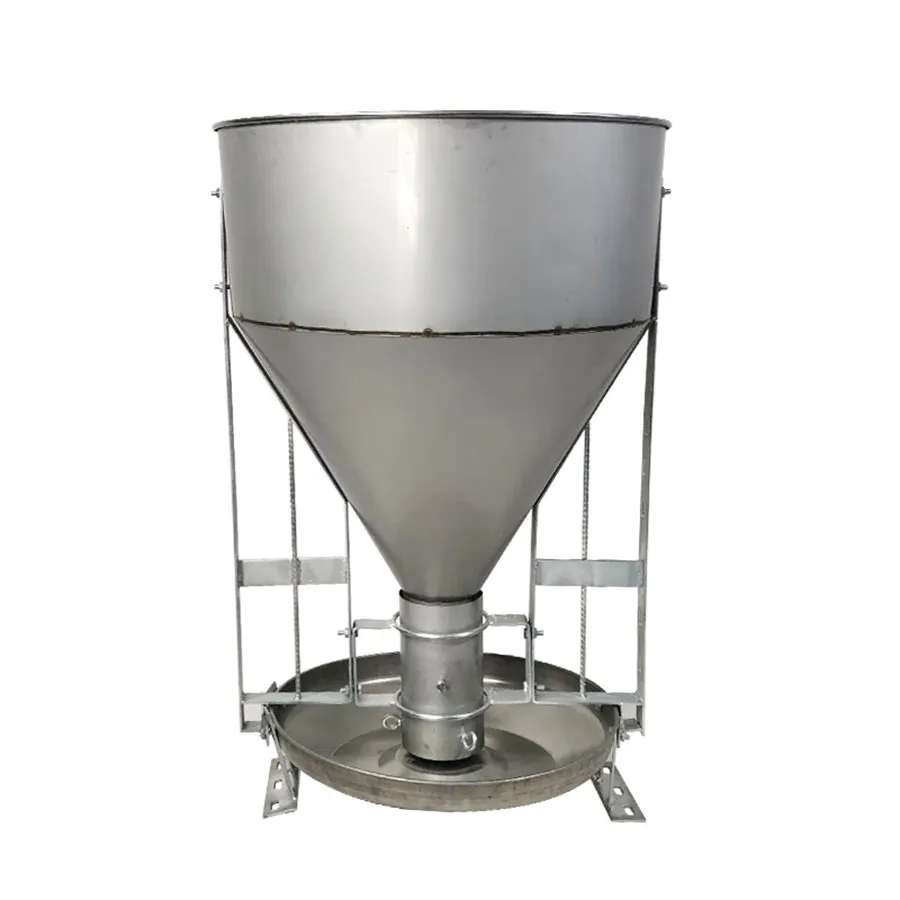
The impact extends beyond economic gains to environmental sustainability. By minimizing feed waste and optimizing water use, these feeders reduce the environmental footprint of swine production. Less wasted feed means less nutrient excretion, benefiting manure management and reducing potential pollution. This aligns with global efforts towards sustainable agriculture and responsible animal husbandry practices, positioning farms equipped with such technology as leaders in the industry. The ease of cleaning and robust construction also contribute to biosecurity, a critical factor in preventing disease outbreaks and maintaining herd health in high-density farming environments.
Manufacturer Comparison and Customization Options
When selecting wet dry feeders for pigs, discerning between manufacturers is crucial. While many suppliers offer similar products, key differentiators lie in material quality, design innovation, after-sales support, and customization capabilities. Reputable manufacturers distinguish themselves through rigorous testing, adherence to international standards (e.g., ISO certifications), and a proven track record of durability and performance.
| Feature | Standard Model (Competitor A) | Premium Model (Product Name: Pig Dry And Wet Feeder In Pig Farming Equipment) |
|---|---|---|
| Main Trough Material | Galvanized Steel | SUS304 Food-Grade Stainless Steel |
| Water Dispenser | Basic Nipple Drinker | Adjustable Flow Nipple, Corrosion-Resistant |
| Feed Adjustment | Simple Manual Lever | Multi-level Precision Manual Adjustment with Optional Automation |
| Durability & Lifespan | 5-8 Years (Typical) | 10-15+ Years (Enhanced) |
| Hygiene & Cleaning | Basic Cleanability, Potential for Corners to Trap Residue | Smooth Surfaces, Rounded Edges, Self-Cleaning Funnel Design, Reduced Spillage |
| Warranty | 1 Year | 3 Years (Typical for this product) |
Customization options are vital for farms with unique layouts or specific operational requirements. A reputable manufacturer offers solutions such as varying capacities, different materials for specific environments (e.g., highly corrosive atmospheres), and integration with existing feeding systems. For instance, some farms might require feeders designed for outdoor use with enhanced weather resistance, while others might need specialized models for specific animal weight ranges or integration with automated feeding lines. Our expertise in designing and fabricating agricultural equipment allows for tailor-made solutions, ensuring the wet dry feeders for pigs perfectly align with the client's infrastructure and production goals.
This commitment to bespoke solutions and high-quality construction is supported by years of experience in the animal husbandry sector, providing peace of mind and demonstrating a commitment to long-term client success. Our products have been rigorously tested and implemented in diverse farming operations across the globe, consistently delivering superior results in terms of feed efficiency, pig health, and operational savings.
Ensuring Trust: FAQs, Delivery, and Support

Frequently Asked Questions (FAQs)
-
Q: How often do wet dry feeders for pigs need to be cleaned?
A: For optimal hygiene, regular cleaning is recommended. Depending on farm practices and pig density, a thorough cleaning once a week or bi-weekly is generally sufficient. The smooth stainless steel surfaces of quality feeders make this process quick and efficient.
-
Q: Can these feeders be used for all pig growth stages?
A: Yes, models are available that cater to various stages, from weaner to finisher pigs. Specific designs, such as those integrated with farrowing equipment, ensure proper feeding for piglets and lactating sows. Adjustable feed gates allow for customization based on pig size and dietary needs.
-
Q: What is the typical installation process like?
A: Installation is generally straightforward, designed for quick setup. Feeders can be floor-mounted or integrated into existing pen structures. Detailed manuals and technical support are provided to guide the process, ensuring correct setup for optimal performance.
-
Q: What kind of return on investment (ROI) can I expect?
A: Farms typically see significant ROI within 1-2 years due to reduced feed waste (up to 20%), improved feed conversion ratios, faster growth rates, and reduced labor for manual feeding. The longevity and low maintenance of quality wet dry feeders for pigs further enhance long-term profitability.
Delivery and Warranty Information
We understand the importance of timely delivery for farm operations. Our standard delivery period for Pig Dry And Wet Feeder In Pig Farming Equipment typically ranges from 15 to 30 business days, depending on order size and customization requirements. Expedited shipping options are available upon request. Each unit is carefully packaged to prevent damage during transit, ensuring it arrives in pristine condition, ready for immediate installation.
To guarantee your peace of mind, all our wet dry feeders for pigs come with a comprehensive 3-year limited warranty against manufacturing defects and material failures. Our commitment to quality extends to dedicated after-sales support, including technical assistance, spare parts availability, and troubleshooting guides. Our experienced team is always ready to provide expert guidance and ensure the long-term performance of your feeding systems, underscoring our reliability as a trusted partner in swine production.
Authoritative References
- Smith, J. A., & Jones, B. C. (2022). "Advances in Swine Nutrition and Feed Delivery Systems for Enhanced Performance." Journal of Agricultural Science and Technology, 14(3), 210-225.
- European Pig Research Group. (2021). "Impact of Automated Wet-Dry Feeding on Pig Welfare and Environmental Footprint." Animal Welfare Journal, 29(4), 450-465.
- Lee, K. M., & Park, D. H. (2020). "Economic Analysis of Modern Feeding Technologies in Intensive Pig Production." Asian-Australasian Journal of Animal Sciences, 33(10), 1600-1610.
- United Nations Food and Agriculture Organization (FAO). (2019). "Sustainable Livestock Production: Global Trends and Best Practices." FAO Publications, Rome.
Post time: Aug . 13, 2025
